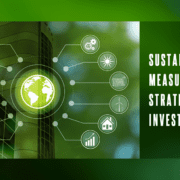As 2024 Approaches, These Are the Issues Facing CRE
As 2023 enters its final days, what are commercial real estate’s top issues? In early October, The Counselors of Real Estate, an international consortium of commercial property professionals, released their annual report, identifying the industry’s top issues. It’s worth reading for an in-depth look at what the industry will face in the coming months and years. Below are some of the report’s highlights (with some market updates included) and additional material on how the Southern California markets are being affected.
Let’s look at the list (from the bottom up).

10. Infrastructure: The American Society of Civil Engineers (ASCE) gave America’s infrastructure a C- in 2021 — its highest grade ever — up from a D+ in 2017. The report comes out every four years and evaluates the state of America’s infrastructure in 17 categories. The grade was issued before the passage and implementation of the bipartisan $1.2 trillion Infrastructure Investment and Jobs Act (IIJA) and the $783 billion Inflation Reduction Act (IRA). The report applauds the legislation addressing deferred maintenance (IIJA) and calls the IRA a “game-changer” for targeting investments in emerging technologies and resilient energy, waste, and water solutions. “Both pieces of legislation are sorely needed… but much more must be done”, the report concludes. Despite the investment, the U.S. still ranks near the bottom in infrastructure spending for the world’s largest economies.
Since November 2021, California has received over $20 billion in federal infrastructure funding, including more than $15.1 billion in federal transportation funding to upgrade the state’s roads, bridges, rail, public transit, airports, electric vehicle charging networks, ports, and waterways. The state programs have also aggressively sought to upgrade infrastructure. In June, the California Transportation Commission (CTC) invested nearly $2 billion into improving the state’s transportation infrastructure while approving an additional $2.3 billion for future projects. This included $260 million in competitive grants for the SR-11/Otay Mesa East Port of Entry, the Batiquitos Lagoon Bridge, and Harbor Drive 2.0/Vesta Bridge Port Access Improvements Project through the Trade Corridor Enhancement Program (TCEP).

9. Asset Pricing: The lack of transaction activity is impeding a reset of asset pricing. “A key hurdle is that buyers and sellers are still in a stand-off,” the report states. “Sellers are holding out for values at or close to what was achievable before the interest rate explosion. Meanwhile, buyers believe values are much lower based on higher capital costs.” The report also notes that $1.5 trillion of commercial real estate debt is coming due for repayment before the end of 2025, which will cause a significant strain on maturing debt. Although a report from Goldman Sachs in mid-November minimizes fears of a recession and predicts inflation will come down significantly, it doesn’t expect interest rates to come back down to the previous low levels for some time. Goldman is anticipating rates will come down to 3.5% to 3.75% by mid-2026, but in the meantime, property owners with loans coming due in 2024 and 2025 will still be refinancing at the higher rates.

8. Supply Chain, Logistics, and U.S. Onshoring: The report notes that 10 years ago, about 60-65% of all containerized goods flowed through the West Coast ports of L.A. and Long Beach, with 30 to 35% coming from the East Coast and Gulf Coast ports. Beginning with the construction of the Panama Canal, and accelerated by COVID, that number has flipped, with 65% of containers now coming through the East Coast and Gulf Coast ports — which reach 70% of the country’s population at twice the speed and half the cost that West Coast ports can. In response, the State of California announced in July that it would invest more than $1.5 billion in port infrastructure upgrades to support a more sustainable, efficient goods movement system.

7. Economy, Interest Rates, and Inflation: With interest rates at their highest since the beginning of the Great Recession and a lack of liquidity in the debt market, CRE transaction activity continues to drop (sales were nearly 10% lower than the previous year, according to an MSCI report in August). “Rising interest rates and the uncertainty higher costs are creating on property values are shaking up both commercial and residential real estate markets and creating a drag on transaction activity,” the report notes. The report also shows the economy’s strength despite inflation, as unemployment remained low at 3.9% in October, and GDP increased at an annual rate of 4.9 percent in the third quarter of 2023. The Dow Jones average rose 2200 points from a pre-Halloween plunge through November 20. “Although concerns about impending “urban doom” may be overblown, we are still in the throes of the late COVID era, and the disruption on major urban economies has not yet run its course,” they warn.

6. Migration’s Impact on Real Estate: As Californians know all too well, there has been a significant migration from high-cost states to lower ones, driven primarily by housing affordability and the rise of remote work. But it’s not just people moving. So are businesses, from high-cost, highly regulated states in the Northeast and the West Coast to the less regulated, more affordable Sun Belt. Companies are looking for locations that have a combination of a skilled workforce and logistics infrastructure — rail, interstates, and access to ports.

5. The Labor Shortage: Finding skilled workers is becoming increasingly difficult for many companies across all industries. One of the primary reasons for the shortage is the movement of baby boomers out of the workforce. A second was the loss of employees during the Great Resignation. And with more workers demanding to work remotely, some companies are handcuffed by their hiring practices when competing for talent. The report also cautions that “AI is the big elephant in the room, and it is not yet clear how AI and machine learning might impact how work is done.”

4. Commercial Real Estate and AI: Although the CRE industry has typically been slow to adopt new technologies, one thing is certain, according to the report. “With innovation moving at a fast clip, industry participants no longer have the luxury of time to ‘wait and see’ how things play out. (Commercial real estate firms) need to act quickly and embrace AI as we continue to integrate alternative data into industry analytics,” it states. AI is also becoming increasingly important to investors as a tool to guide them on investment and development strategies. To read more about AI and CRE, check out our recent blog post, How Will AI Impact Commercial Real Estate?

3. The Housing Shortage: The lack of affordable housing is hurting businesses in high-cost markets, particularly in Southern California. The L.A. Times recently reported that Southern California home prices are nearing a record high “at a time of sky-high mortgage rates, a double blow that’s hammering housing affordability across the region.” In October, the average home price for the six-county region climbed to $831,080, according to data from Zillow, leaving prices just 1% below the all-time high reached in 2022.
Nationally, The National Apartment Association (NAA) and the National Multifamily Housing Council (NMHC) estimate that the U.S. needs to build 4.3 million more apartments by 2035 to meet the demand for rental housing. Although the report states that constructing 309,000 units per year is “manageable,” the high level of multifamily housing built in the last two years is slowing due to higher costs and tighter lending.

2. Office Market and the Hybrid Work Model: The emergence of the hybrid work model has totally disrupted the office market, from leasing to investing decisions. According to WFH Research, 62% of all office workers were working remotely at the peak of the pandemic. That percentage has now been reversed (data through October 2023), with 58% of workers fully back in the office, 30% working hybrid schedules, and 12% working from home. In addition, 28% of all U.S. workdays, on average, are spent working from home. Although the future of hybrid work remains unclear (it’s here to stay, BTW), building owners and the central business districts where they are located are in peril, as downtown restaurants and retail have seen a massive falloff in business. Many buildings, particularly older B and C properties in CBDs, may soon be rendered obsolete, and visions of converting them to housing appear impractical in many cases. How this plays out may be the single biggest issue facing the CRE industry. That is, if it weren’t for #1.

1. Political Unrest & Global Economic Health: The report lists this as the number one concern — and with good reason. The report was published before the deadly attack on Israel by Hamas and Israel’s devastating response in Gaza, and there are still ongoing concerns on the geopolitical front in Russia. It also cites ongoing problems within our own borders (inflation, high interest rates, bank stress, and tightening liquidity) as well as mixed macroeconomic signals in the economy, which contributes to an overarching uncertainty on where things are headed.
The report recommends that those invested in commercial real estate “need to stay focused and pay attention to the things that are going to affect their particular segment of the industry, whether they are a lender, a developer, a distressed buyer or institutional investor.” Read the full report here.
To gain insight into your own market’s leasing, selling, or acquisition opportunities, contact your broker at Voit Real Estate Services.









